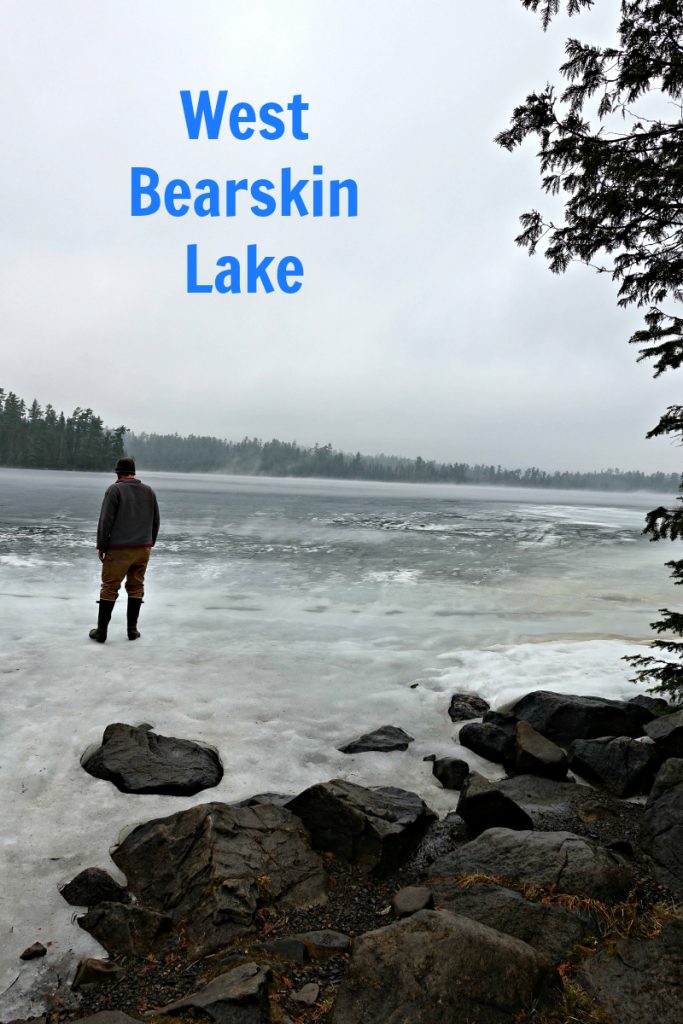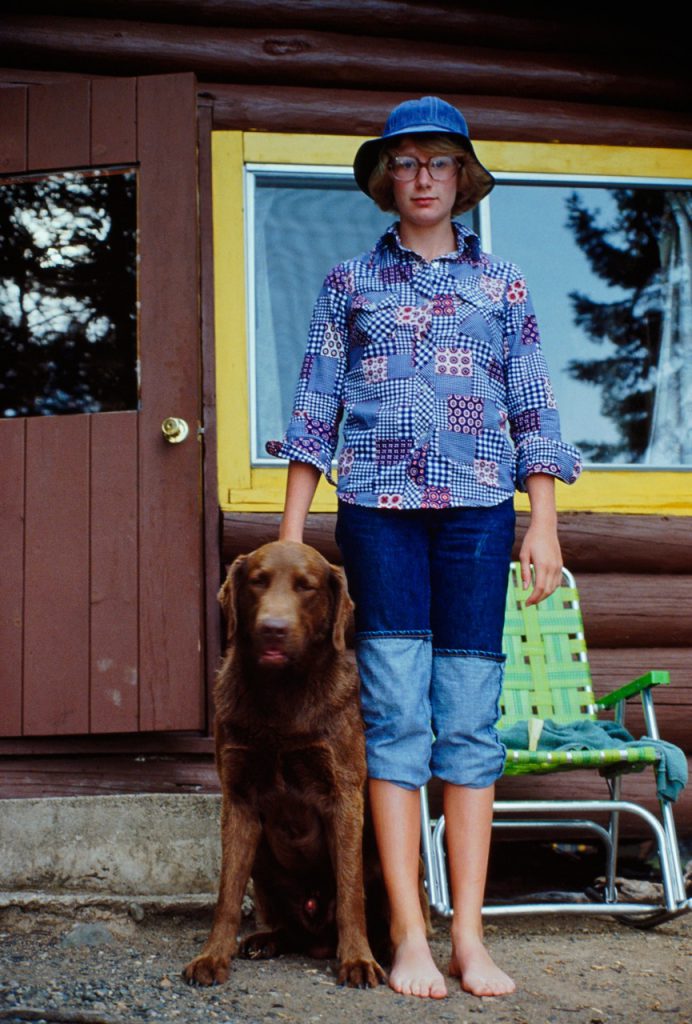No season poses more challenges in the Boundary Waters than winter. How to dress for winter play in the Boundary Waters is particularly puzzling, especially since it’s not unheard of for winter temperatures to fluctuate as much as 70 degrees in the span of 24 hours. (Just think how differently you would dress for 30ºF temps vs. 90ºF, yet we hardly bat an eyelash when temps go from -35ºF below to 35ºF above in the winter months.) While hypothermia should be a consideration nearly all year in the BWCAW, at the risk of sounding hyperbolic, a clothing misjudgment in the winter can lead to the loss of toes or even, life. (We’ve all read To Build a Fire, amirite?) If you get only thing right during your winter camping or ice fishing adventure, you want it to be your clothing.

The amount of winter clothing you need directly correlates to your level of physical exertion, so you really need two clothing plans for any given day: one for when you’re in motion and the other for when you’re in camp or hanging out by an ice fishing hole.
After 30+ winters in northeastern Minnesota, we’ve honed our winter clothing pretty well, so we’ve put together a “winter wear primer” to help others avoid common stumbling blocks when dressing for winter weather.
On any typical winter day, we’re wearing some sort of mix and match outfit from what’s laid out below.

How all that clothing shakes out each day depends on the day’s activity, temperature, and wind.
1) All about that base

Rule #1 for winter wear in Minnesota is to dress like an onion – an onion made of wool, that is. Keep the layer next to your skin comfortably snug and opt for wool material to avoid a cold, clammy base layer. The wool wicks moisture away from your body so you stay dry when you’re in motion and warm when you’re taking a breather. (If you’re allergic to wool, consider silk.)
I’ve had good luck with stuff from Minus33, a company specializing in merino wool garments of varying weights. I wear their mid-weight long sleeve shirt when temps are above 0º and opt for ” expedition weight” when it’s colder. For bottoms, I throw on the nearest pair of leggings (yep, those much hyped Lularoe leggings work pretty well as long underwear) if it’s a warmer winter day, but it’s below 0º, I opt for mid-weight wool long underwear.
2) Pants

Wool pants are the #1 item we recommend if you’re serious about winter recreation in the Boundary Waters. In our opinion, wool pants are the perfect winter pants solution for northeastern Minnesota’s climate, since they seem to maintain a comfortable temperature regardless of if it’s 30º above or -20º. They might not win fashion points, but they wick moisture, dry quickly, and as long as you have a base layer on, aren’t itchy. Beside, you can wear them right next to a fire and never worry about them melting. If you’re planning to hike several miles in a day, you’ll appreciate their breathability.
Note: Unfortunately, wool pants are very difficult to find in a women’s cut. (L.L. Bean used to be a safe bet, but they don’t have any listed on their website currently.) It’s worth hunting around for a pair, because trying to squeeze into a pair of men’s cut is not a comfortable solution.

Wool pants are your best option for if you’re planning to spend most of your day in motion, but the wind will whistle straight through them. For more sedentary winter activities (i.e. snowmobiling, ice fishing), don’t knock bib snow pants. While bibs can be a pain, it is nice to duck under a snow-laden branch and not have a mini avalanche down your backside. They’re clumsier to move in than wool pants, but if you’re hanging out in windy conditions, insulated water and windproof pants are what you want. Alternatively, you could just pull a windproof nylon shell over your wool pants.
3) Middle layer

This is the part of dressing for winter where the wheel starts to come off the wagon for people. Functional winter clothing is definitely an investment and many people try to fudge it with lots (and lots) of layers of cotton sweatshirts, sweatpants, pajama pants, and rain gear. But more clothes does not equal more warmth. In fact, by the time you’ve pulled on four sweatshirts and shoehorned yourself into your rain jacket, your clothing will be so tight, you’ll be compromising your blood’s circulation. Your body’s internal furnace can’t keep you warm if it can’t fully circulate blood.
Also, no one wants to end up like Randy in The Christmas Story:
via GIPHY
But good news! This is a classic case of “less is more.” All you really need for your mid layer is a loose fitting wool sweater or Polarfleece pullover or zip-up. The idea here is to create pockets of warm air around your body, just like how a quilt functions. If it’s below 0º, I throw a down or Primaloft vest over my sweater. Always have a vest in your backpack to use as an outer layer on a long rigorous hike or as an extra layer if the wind picks up.
4) Socks

Oooo, is there anything worse than cold toes? This is another area of winter wear where people compulsively keep throwing on layer after layer . . . to their own detriment. The last thing you want is your feet sheathed in an impenetrable layer of socks; you want the warm air inside your boots to actually reach your little piggies.
You should just need one or two layers of socks, regardless of the temperature. When it’s above 0º, I wear a merino wool hiking sock. If it’s colder, I’ll pair a thicker wool sock with a lightweight liner sock.
Not all wool socks are created alike and if you’ve been wearing wool socks for a while, you’ve probably had the unpleasant experience of having a pair of popular and expensive wool socks blow out in the heels and balls of your feet after just a few wears. We’ve gone through a lot of different wool socks and find Point 6 and Darn Tough brands to have the best bang for your buck(s).
5) Boots

There are a lot of schools of thought when it comes to winter footwear. Many Minnesotans swear by Steger Mukluks. Mukluks are your warmest and lightest winter boot option if you’re walking through dry powdery snow. However, they’re not waterproof, so don’t wear them if there’s a chance of slush.

I wear Schnee’s Extreme Pac boots for most Boundary Waters winter adventures because they’re waterproof, the removable thinsulate/wool liners keep feet warm and dry, and the textured soles are helpful slippery portage hills. They’re on the heavy side, although not nearly as clunky as the Baffins I clomped around in for years. I spent my childhood in Sorel boots which sport a very similar design to these Schnees. One point in the (more expensive) Schnee boots’ favor is that they can be sent into the factory in Montana for resoling, although you to get years and years of use out of a single pair.
Honestly, for a couple hour excursion in above 0º temps, I’d just pull on my Bogs since I won’t be standing still long enough for the completely unbreathable neoprene to turn the inside of boots into a swamp. Regardless of the fact that they’re rated to -40ºF, the neoprene in Bogs makes them a really bad option for an all day or overnight expedition.
6) Accessories

One place not to skimp on layers is with outer accessories. To get away with less layers on your core and legs, you need to prevent body heat from escaping through your hands and head. A warm hat (you don’t have to wear a hand knit alpaca Tuscarora hat, but I would), a scarf or polar fleece neck gaiter, and mittens are essential winter accessories. When it dips below 0º, or if you’re going to be standing outside, add a thin polar fleece balaclava underneath your hat and gaiter. You’ll also want a pair of sunglasses (and some sunscreen) packed to combat the glare from the snow on sunny days.
I’ve always preferred mittens over gloves because they utilize “the buddy system” with your fingers to keep your hands warmer than when your hand is in gloves. I utilize a mitten system of a pair of buckskin chopper mittens to block with wind and moisture with a set of hand knit wool liner mittens inside for warmth and to wick away moisture. Mittens and gloves have a sneaky habit of getting damp, so make sure to always have a dry pair of mittens and/or gloves packed. If you prefer gloves, OR makes great waterproof gloves, just keep in mind that in frigid conditions gloves will never keep your hands as warm as mittens will.

Although too warm and bulky to be useful when hiking, I pull out my Wiggy’s mittens when I’m going to be sedentary in cold weather because they’re basically sleeping bags for your hands and are impervious to extreme cold. They’re your “I never ever want to have cold hands again” solution and are nice to have in your pack to hand to the person who just stuck their hand down the ice fishing hole.
7) Outer layer

To top it off your winter outfit, you need a big puffy parka or anorak. If you’re not allergic, down is your warmest option, but synthetic fibers also work well and are definitely easier to care for. A hood with a fur ruff (real or faux) is an important feature to keep the wind off your cheeks. You also want plentiful pockets to hold extra mittens, balaclavas, Kleenex, snacks, and more.
Regardless of the weather forecast, you should always have a heavy winter coat packed. Never underestimate how chilly you can grow standing in the middle of a windy frozen lake. Even on the warmest winter day, you may find you want the protection from the wind that only a thick hooded coat can offer.
What lessons have you learned about dressing for winter in the Boundary Waters? What winter clothing item would you never be without?





























 The chocolate chips have a tendency to fall off the top of the bars when you cut them, but if you stir them into the batter before baking, they will melt completely and turn the whole batch of bars chocolate-colored. Pick your poison. (Note: just not including chocolate chips in the recipe is not really considered a viable option in this household.)
The chocolate chips have a tendency to fall off the top of the bars when you cut them, but if you stir them into the batter before baking, they will melt completely and turn the whole batch of bars chocolate-colored. Pick your poison. (Note: just not including chocolate chips in the recipe is not really considered a viable option in this household.)













